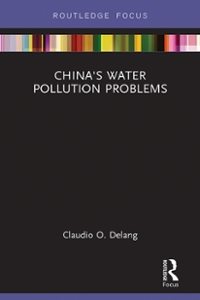Question
Below is a brief macroeconomic analysis of South Africa, please perform another brief macroeconomic analysis of Malaysia. FDI policy In addition to natural import growth
Below is a brief macroeconomic analysis of South Africa, please perform another brief macroeconomic analysis of Malaysia.
FDI policy
In addition to natural import growth after relieving from sanitary measures, structural reforms were introduced to boost FDI inflows in public-private partnerships and parastatal enterprises. South Africa remains key partner in the region for multinational companies due to "itsstable institutions, an independent judiciary and robust legal sector committed to upholding the rule of law, a free press and investigative reporting, a mature financial and services sector, good infrastructure, and a broad selection of experienced local partners", - as stated by U.S. Department of State, Bureau of Economic and Business Affairs
Still, while the government is generally open to FDI, it is more sensitive when dealing with M&A activities.The 2018 Competition Amendment Billintroduced in 2019 created a mechanism to review potential FDI and M&A deals to protect national security interests. Assistance to foreign investors is provided byThe Department of Trade and Industry and Competition's (the DTIC) Trade and Investment South Africa (TISA)that opened provincial One-Stop Shops aimed to provide support to foreign investors for informational services investments missions, consultations on local regulations, connections to potential joint-venture partners, assistance with obtaining incentives, work permissions and logistics support. Even though South-African economy is service oriented, TISA is focused on manufacturing as they believe it will attract labor help to reduce high unemployment rate.
There is now limitation on foreign private ownership, however the Broad-Based Black Economic Empowerment Act of 2013 (B-BBEE), and associated codes of good practice, requires levels of company ownership and participation by Black South Africans to get bidding preferences on government tenders and contracts.The DTIC created an alternative equity equivalence (EE) program for multinational or foreign owned companies to allow themto comply with the legislation.
Fiscal policy
Due to heavy revenue losses and Covid-19 spending the budget deficit surged to 11% of GDP in 2020-2021. However, it was less drastic than the forecast of 15.7% predicted by the Treasury. Higher commodity prices, as well as higher tax collection rates reported by the South African Revenue Service, provided a brighter outlook for 2022-2023, which means that increase of tax burden is likely to beput on hold. On the other hand, 2021-2022 budget assumes real-term wage cuts in the public sector and their implementation is at high risk because of a fightback bylabor unions via a combination of legal and political pressure as well as strikes and heavy debt burdens of parastatal enterprises.
Fiscal consolidation and South Africa's government recourse to deep and liquid domestic markets are aimed reduce the risk of South Africa's budget distress, however there is little room to maneuver in terms of expenditure or revenue targets - in case they are not met, South Africa will have no other choice but to undertake a formal IMF program with its strict conditions.
Monetary policy
As in many other developing countries, the South African Reserve Bank cut the benchmark interest rate 5 times in 2020to 3.5%. With the economy starting torecover, the rate is steady and likely to increase in the end of 2021, beginning of 2022.
Political stability
South Africa is known for its political-driven violence and civil disturbance. Violent protests in poor districts aiming at the government and low- and middle-level politicians are common. As of today, 337 people has become victims of the ongoing protest the imprisonment of the former president Jacob Zuma.
In general, however, the political situation is stable and secure due to South Africa's strong public institutions.
Sources:
https://www.state.gov/reports/2020-investment-climate-statements/south-africa/
https://www.bbc.comews/topics/cq23pdgvyl7t/south-africa
https://www.fitchsolutions.com/country-risk/private-consumption-drive-south-african-growth-2021-16-06-2021
www.eiu.com

Step by Step Solution
There are 3 Steps involved in it
Step: 1

Get Instant Access to Expert-Tailored Solutions
See step-by-step solutions with expert insights and AI powered tools for academic success
Step: 2

Step: 3

Ace Your Homework with AI
Get the answers you need in no time with our AI-driven, step-by-step assistance
Get Started


